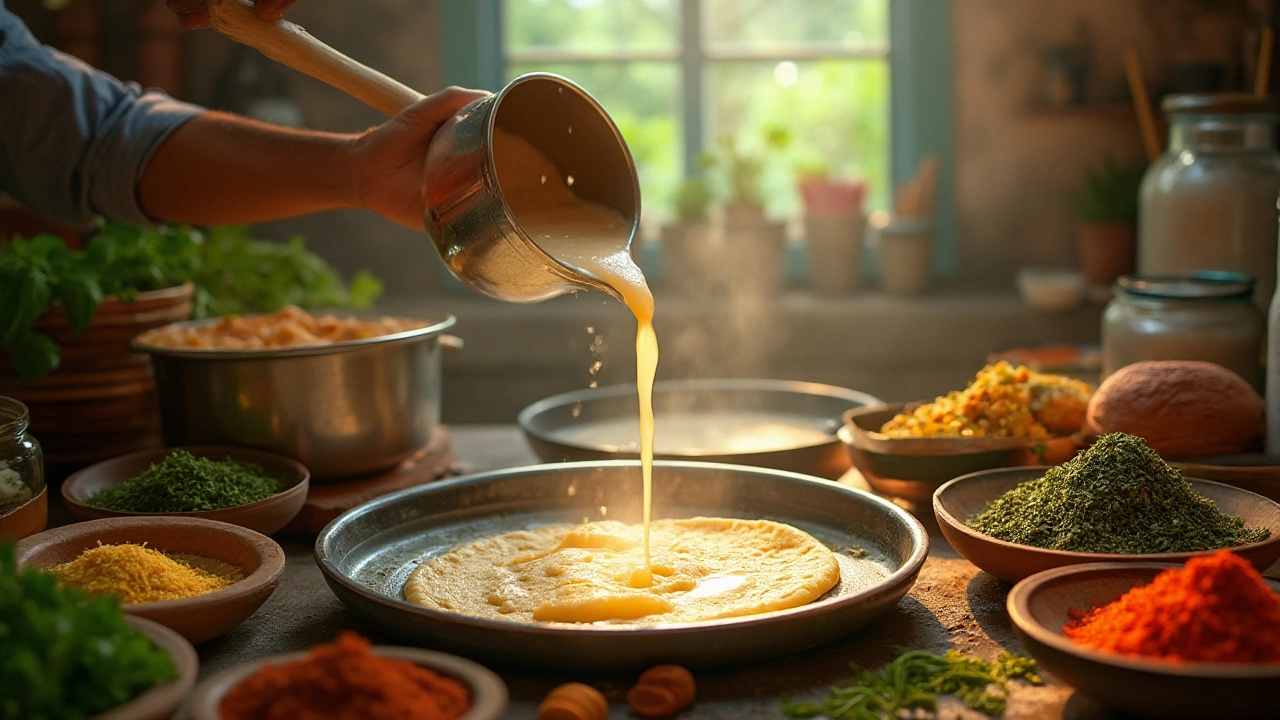Paneer Whey – Benefits, Uses & Kitchen Tips
When working with Paneer Whey, the liquid left after curdling milk to make paneer, you’re handling a versatile by‑product that many home cooks overlook. Also known as whey from paneer, it is rich in Whey Protein, a high‑quality protein source that supports muscle recovery and overall health. In traditional cheese making, paneer whey is the leftover stream after Paneer formation, making it a natural partner for soups, batters, and beverage blends.
One key reason paneer whey matters is its nutritional profile. It supplies essential amino acids, calcium, and minerals like potassium while remaining low in fat. Compared to regular whey powders, fresh paneer whey retains natural lactobacilli, which can aid digestion. For athletes or anyone looking to boost protein intake without extra additives, a cup of paneer whey can add 8‑10 g of protein to a meal. This makes it a budget‑friendly alternative to commercial whey protein supplements.
Practical Kitchen Applications
Integrating paneer whey into everyday cooking is easier than you think. Because it has a mild, slightly sweet flavor, you can use it as a liquid base for batter‑based dishes like dosa or idli, enhancing fluffiness while adding protein. In Indian cuisine, replacing part of the water in dal or soup recipes with paneer whey adds depth and nutrition without altering the taste profile. For sweet lovers, mixing whey into pancake batter or adding a splash to lassi creates a creamy texture that feels indulgent yet healthy.
Chefs also experiment with paneer whey in fermentation. Adding a small amount to batter starter cultures accelerates the rise, thanks to its natural enzymes. This is why many home cooks report a quicker fermentation time for dosa batter when they stir in a few tablespoons of whey. The same principle applies to making soft rotis; a whey‑enriched dough stays pliable and cooks evenly.
Beyond cooking, paneer whey can serve as a natural fertilizer. The mineral content, especially nitrogen, supports plant growth when diluted with water. Gardeners often use whey as a foliar spray for leafy greens, capitalizing on its mild acidity to deter pests. So whether you’re a foodie or a plant enthusiast, paneer whey finds a place in your routine.
If you’re wondering how to store paneer whey, keep it refrigerated in a clean container for up to three days. For longer storage, freeze it in ice‑cube trays and pop out cubes as needed—perfect for portion‑controlled protein boosts. Remember to give it a quick shake before using, as solids may settle.
Below you’ll discover a curated collection of articles that dive deeper into specific uses—ranging from dairy‑based marinades to quick batter hacks. Each post offers step‑by‑step guidance, so you can start putting paneer whey to work in your kitchen right away.
Understanding the Uses and Benefits of Paneer Whey Water
Dive into the frequently overlooked world of paneer whey water, a byproduct brimming with nutritional and practical uses. This article explores what makes this liquid unique, how it offers a sustainable solution to food waste, and ways to incorporate it into your everyday cooking and home routines. Packed with proteins and probiotics, paneer whey proves to be more than just a kitchen discard. Learn how to make the most of this understated marvel with easy-to-follow tips and ideas.
Read more